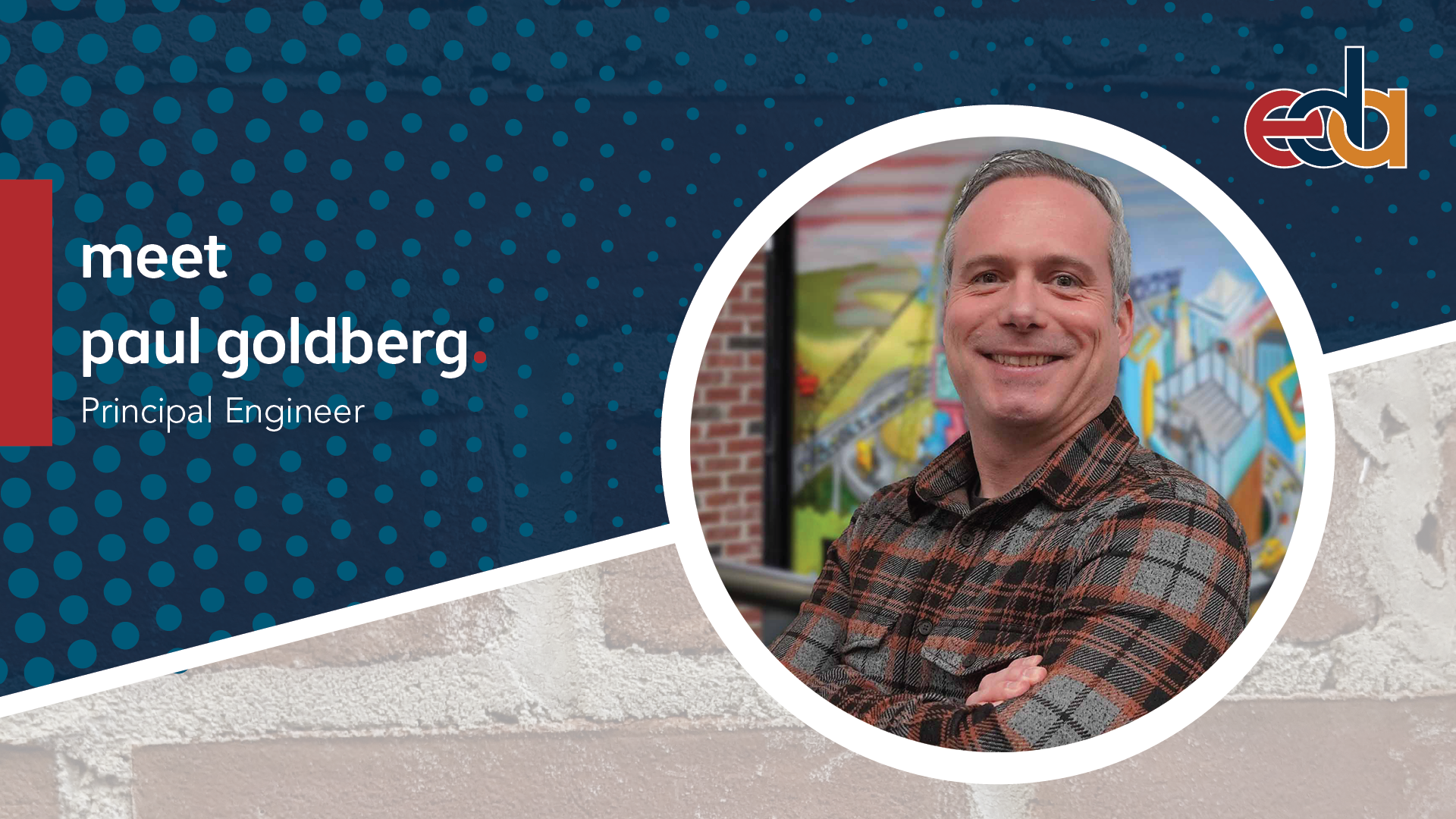Can you describe your role at EDA and how engineering contributes to the company's success?
My job is to navigate the complex challenges and requirements that come with each project. I help develop and oversee strategies to ensure success on these intricate jobs. Additionally, I’m working on “memorializing” these strategies and examples into an EDA Design Guide. This industry is constantly evolving, and having a structured approach helps us stay ahead and deliver the best possible outcomes.
How long have you been at EDA, and what does your journey with the company look like?
This February marks my 15th year with EDA, and my journey here has truly come full circle. I left the engineering department at my previous employer to take on a Project Management role at EDA. After spending 10 years in operations as a PM, it became clear that my skills were best suited for a technical role that was in high demand at the time. When the Engineering Department was established as part of our new Shared Services division, I was able to hit the ground running.
What inspired you to pursue a career in engineering?
I literally “fell into” this line of work. When I was a freshman in college, I would never have imagined this would be where I’d end up. I quickly realized I was good at this type of work, so I just decided to run with it. It didn’t hurt that this type of work aligns with my personality type. I haven’t looked back since.
At EDA, engineering plays a crucial role in balancing creativity with practicality. Rather than a strict “hard science” like physics or chemistry, our work involves a more adaptive, problem-solving approach—similar to fields like geography or economics. We rely on third-party Professional Engineers (PEs) to validate our methods, but our role is to determine the best strategies based on customer expectations, project constraints, and EDA’s position in the market. This dynamic nature of engineering is what keeps it both challenging and rewarding.
What has been the most challenging engineering problem you’ve faced, and how did you solve it?
One of the most common challenges we face on projects is working within highly specific and sometimes rigid specification language set by customers and design teams. The best way to navigate this is through open communication—setting up a meeting to walk through the requirements together. Often, once we discuss the details, we can identify potential challenges and collaborate on a solution that achieves the intended outcome in a practical way. The biggest hurdle is usually getting that initial conversation started, as it requires alignment from all stakeholders. Fortunately, with our experience and expertise, we’re able to guide these discussions and find solutions that work for everyone.
What recent engineering advancements do you think are shaping the future of construction?
Everyone keeps mentioning “AI” as a buzzword. My thought is that this industry is too unpredictable for that. BIM (Building Information Modeling) combined with 3D modeling will have more impact. This technology can bring attention to issues on-site long before boots hit the ground. I see BIM mostly as a tool to verify quantities and manage risk in an industry that is known to be unpredictable at best and outright perilous at worst.
What was your biggest engineering dream when you were younger or even now that you’re an established engineer?
Growing up, LEGO sets were my favorite toys. I always liked building things. I also enjoyed taking things apart to see how they worked, whether it was an old phone or an old computer. I like to stay inquisitive and believe I still learn something new every day. I never had any aspirations to work for NASA or SpaceX, but I do enjoy traveling abroad to see how structures that were built long ago are still standing.
You could say I’m living the dream—though, like any dream, it comes with its challenges.
What advice would you give to aspiring engineers?
Don’t forget the importance of soft skills. You can be the smartest person in the room, but no one will listen to you if you can’t present the information in a manner that important decision-makers will understand and take into consideration.
What’s something about you that most people don’t know?
I have two dads. My mother left my biological father (my first dad) before I was born. I was adopted by my second dad (my legal father) at the age of five. My biological father went on to have three more children after me, while my legal father had two children from his first marriage prior to meeting my mother. I’m one of seven—or eight—siblings in total, depending on how you count them. Recently, I have reconnected with my biological father as well as my siblings from his side of the family. Now the joke is that my “family tree” is more like a “family weave.” It’s a little tricky to explain the different relationships in my immediate family if you don’t know my background, ha-ha.
If you had to work in a completely different trade or department at EDA, what would it be?
That’s a tough one. It’s probably a tie between field supervision and estimating. Everything flows downhill. Sometimes I wish I was ahead of it in estimating or making sure it’s executed correctly downstream in the field.
What has been the best part of working at EDA?
I’m able to like what I do. I’ve come to realize not too many people can say the same thing. I’ve also realized that liking what you do, excelling at what you do, and mentoring others to teach what you do is what separates a job from a career.
